Vegetable Farm (Addition and Subtraction up to 20) - 3 Class 1 Worksheet Maths
Q1: Subtract the numbers. Ans:
Ans: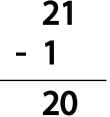
Q2: Subtract the numbers. Ans:
Ans:
Q3: Subtract the numbers. Ans:
Ans: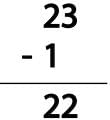
Q4: Subtract the numbers. Ans:
Ans: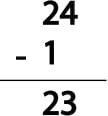
Q5: Subtract the numbers. Ans:
Ans: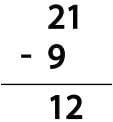
Q6: Subtract the numbers. Ans:
Ans: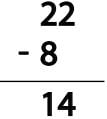
Q7: Subtract the numbers. Ans:
Ans: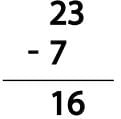
Q8: Subtract the numbers. Ans:
Ans: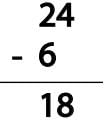
Q9: Subtract the numbers. Ans:
Ans: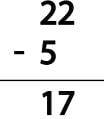
Q10: Subtract the numbers. Ans:
Ans: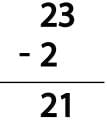
Q11. Answer the following questions:
(i) There are 15 candies in a jar. If 8 candies are already taken, how many candies are left in the jar?
15 - 8 = ______
Ans: 15 - 8 = 7
So, there are 7 candies left.

(ii) A box has 20 marbles. If 14 marbles are taken out, how many marbles are still in the box?
20 - 14 = ______
Ans: 20 - 14 = 6
So, there are 6 marbles left.

(iii) Jenny had 10 balloons, and 3 of them flew away. How many balloons does she have now?
10 - 3 = ______
Ans: 10 - 3 = 7
So, Jenny has 7 balloons now.
(iv) In a garden, there were 16 flowers. If 6 flowers were picked, how many flowers are still in the garden?
16 - 6 = ______
Ans: 16 - 6 = 10
So, there are 10 flowers still in the garden.
(v) Tommy had 9 toy cars. He gave away 4 toy cars to his friends. How many toy cars does Tommy have now?
9 - 4 = ______
Ans: 9 - 4 = 5
So, Tommy has 5 toy cars now.
(vi) There are 25 apples on a tree. If 11 apples fall off, how many apples are still on the tree?
25 - 11 = ______
Ans: 25 - 11 = 14
So, there are 14 apples still on the tree.
(vii) Sam had 18 storybooks. He lent 8 to his friend. How many storybooks does Sam have now?
18 - 8 = ______
Ans: 18 - 8 = 10
So, Sam has 10 storybooks now.
(viii) A teacher had 30 markers. If 13 markers dried up, how many markers are still usable?
30 - 13 = ______
Ans: 30 - 13 = 17
So, there are 17 usable markers.
(ix) There were 22 cupcakes in a tray. If 7 cupcakes were eaten, how many cupcakes are left?
22 - 7 = ______
Ans: 22 - 7 = 15
So, there are 15 cupcakes left.
(x) Lisa saved 16 dollars. She spent 9 dollars on a toy. How much money does Lisa have left?
16 - 9 = ______
Ans: 16 - 9 = 7
So, Lisa has 7 dollars left.
FAQs on Vegetable Farm (Addition and Subtraction up to 20) - 3 Class 1 Worksheet Maths
| 1. What are some common vegetables grown on a vegetable farm? |  |
| 2. How can I start my own vegetable farm? |  |
| 3. What are the common challenges faced by vegetable farmers? |  |
| 4. How long does it take for vegetables to grow on a vegetable farm? |  |
| 5. How can I ensure the quality and freshness of vegetables from a vegetable farm? |  |





















